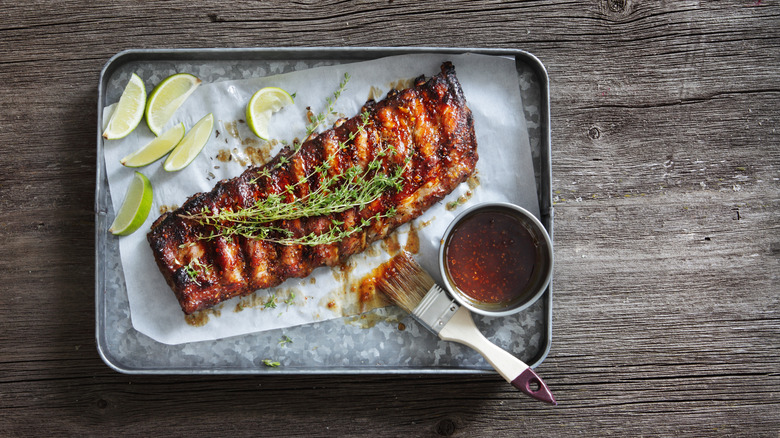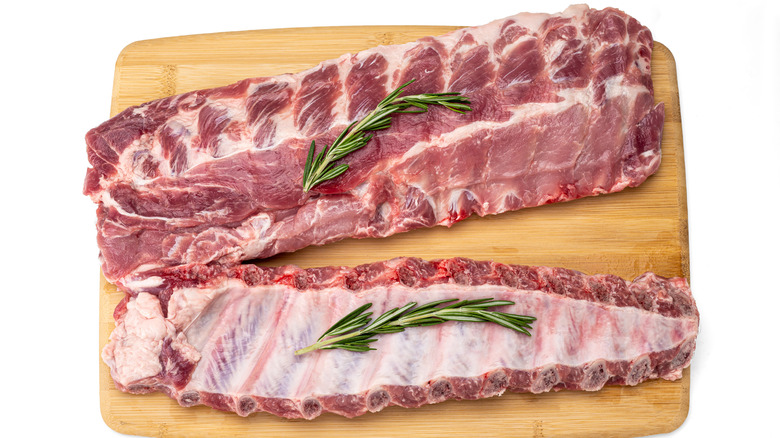BBQ Beef Vs Pork Ribs: Which Are Fattier?
For fans of meat cuts packed with tender texture and mouthwatering flavor, few options can top ribs. Although the cut's bones don't contribute to an improved taste, they do enhance the cooking process, encasing moisture as well as offering insulation. Instead, it's really the contained fat that influences the resultant palate. So when shopping for richly flavored bone-in meat, you may wonder whether barbecue beef or pork ribs come with more fat.
It's a nuanced question, as both animal types offer ribs of varying cuts. Furthermore, the manner in which fat impacts the flavor experience differs based on the animal type. Not to mention, the preparation method influences the compound's composition, too. Nevertheless, when generally contrasting the two meats' compositions, it's beef that comes ahead.
Densely marbled — especially in areas like short ribs — this cut's composition usually requires a more patient cooking time to render (aka melt down) the extra fat. Subsequently, the flavor differences between pork and beef ribs emerge, with beef offering a richer dining experience. Yet there's also merit to the balanced, palatable fattiness of pork ribs, which are easier to cook and much simpler to enjoy.
Beef ribs come with a higher fat content than pork
To really unpack the fatty nuances of pork and beef ribs, investigate the details of each respective cut. The leanest rib you can buy is pork's baby back, which comes from the top of the rack. The meaty yet tender composition makes for a breezy barbecue pork rib recipe, which explains their popularity. And just a bit fattier are spare ribs, from the underside of the animal. Especially when cartilage and bone are trimmed off to form St. Louis style ribs, such a meat tastes extraordinarily tender.
Such tasty pork offerings are a sharp contrast to the fattiest of beef ribs, which source from the plate. One of the most affordable rib offerings, they're located adjacent to the brisket, and thus generate a decadent, beefy composition. Sourced right from the middle of the animal — the fatty plate numbers ribs six to ten — you'll need to really pay close attention to rib cooking tips for the cut to shine. Stay patient, smoking or braising until all the fat turns from chewy to soft and juicy.
Meanwhile, chuck and rib short ribs butchered from closer to the head offer a more balanced composition of fat to meat. With such uniform marbling, you can even apply high heat and enjoy this cut medium rare. So although they're still technically fattier than a pork sparerib, the entailed preparation and flavor of certain beef ribs still lie closer to a steak than other pork rib recipes. Still, even with the work and time, beef ribs give a juicy flavor that just can't be beaten.


